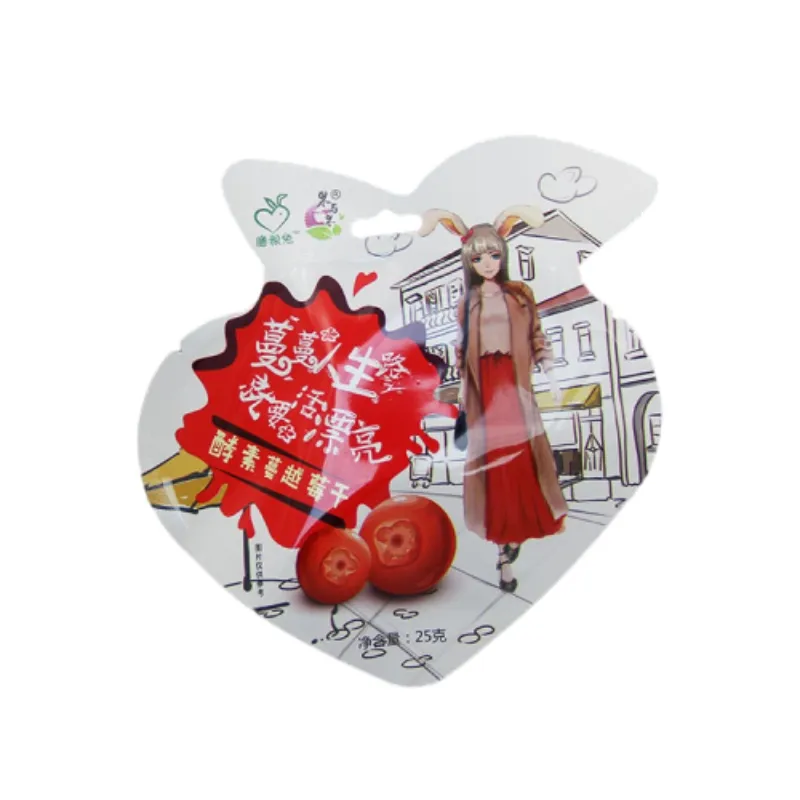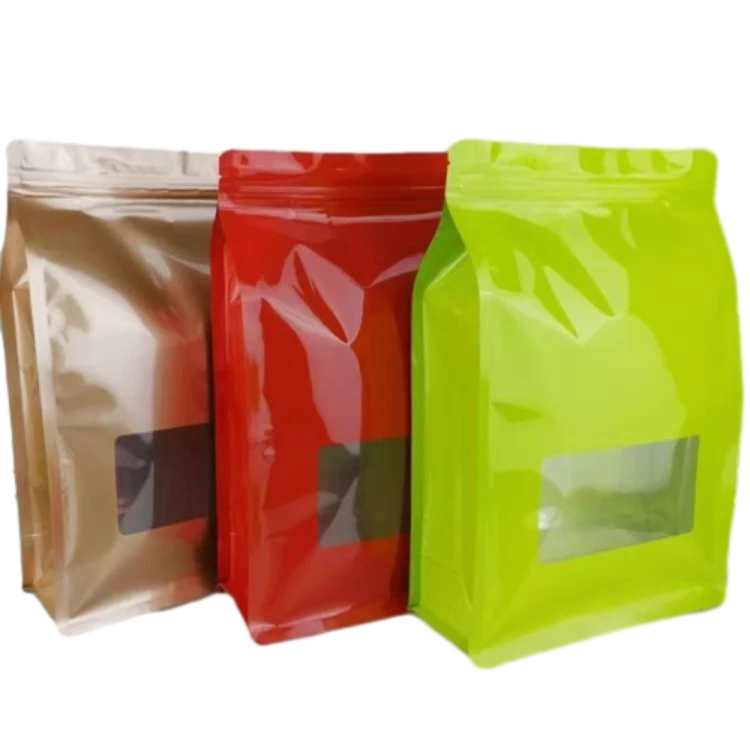This article examines flexible pouch solutions transforming global packaging:
- Market data and growth projections for pouch packaging
- Material science innovations enhancing barrier performance
- Comparative analysis of leading global manufacturers
- Customization variables from closures to printing options
- Industry-specific deployment case studies
- Sustainability metrics driving material evolution
- Implementation guidelines for optimal pouch selection

(types of pouches in packaging)
Flexible Packaging Growth Metrics
Pouch adoption shows double-digit growth trajectories globally, outpacing traditional rigid packaging formats. According to Smithers Pira research, flexible pouches now represent 20.7% of the $270 billion packaging market, projected to reach $335 billion by 2027. North American consumers receive 53 billion pouches annually - a 47% volume increase since 2019. This growth stems primarily from sustainability advantages: pouches reduce material consumption by 65-80% versus rigid alternatives and decrease transportation emissions by 50-70% per product unit shipped.
Material Science Innovations
Multi-layer laminates represent the current technical frontier in pouch performance. PET/aluminum foil/PE constructions achieve oxygen transmission rates below 0.5 cc/100in²/day - essential for coffee and pharmaceutical applications. Recent developments include 7-layer nano-barrier films eliminating foil requirements while maintaining shelf-life integrity. Transparent SiOx and AlOx coatings applied via plasma-enhanced chemical vapor deposition (PECVD) enable recyclable mono-material polypropylene pouches with OTR under 1.0 cc/m²/day. This evolution marks significant progress toward circular economy compliance.
Manufacturer Technology Matrix
| Supplier |
Core Technologies |
Minimum Run Length |
Recyclable Options |
Production Capacity (Units/Month) |
| Amcor Flexibles |
Retort processing, RFID integration |
100,000 units |
37% of portfolio |
380 million |
| Constantia Flexibles |
Peelable seals, UV-blocking films |
75,000 units |
29% of portfolio |
210 million |
| Sealed Air Corporation |
High-barrier ClearTM films |
50,000 units |
42% of portfolio |
190 million |
| Huhtamaki Group |
Compostable laminates |
35,000 units |
58% of portfolio |
175 million |
Customization Configurations
Modern converters offer engineering specification matrices addressing 7 critical variables: closure systems (zippers vs press-to-close vs spouted caps), layer compositions (3 to 9 material combinations), barrier requirements (moisture/oxygen/light protection), graphic printing processes (rotogravure vs flexography vs digital HD), dimensional parameters, and certification compliance (FDA/USDA/ISO). Leading suppliers maintain libraries of certified substrates including recyclable PE/PP, metallized PET, and paper composites meeting diverse functional requirements. Compression testing validates dimensional stability across temperature variations (-40°F to 250°F).
Industry Deployment Examples
Dry soup brands utilizing triple-layer reverse-printed PET/AL/PP stand-up pouches achieve 26% distribution weight reduction while increasing shelf visibility. Pet food producers adopting pre-made quad-seal pouches with argon gas flushing extend product freshness by 11 months with 89% less packaging waste. Medical device manufacturers have transitioned to form-fill-seal pouches featuring Class VI USP-compliant sterilization compatibility, replacing 73% of previous thermoformed plastic packaging. Coffee suppliers using vacuum-sealed gusseted pouches with one-way degassing valves report 62% reduction in packaging-related customer complaints.
Environmental Impact Reduction
Material science advances enable 33% average reduction in pouch thickness without compromising burst strength or barrier integrity. Lifecycle assessments confirm flexible pouches consume 82% less water during manufacturing than equivalent glass packaging and generate 73% fewer CO2 emissions than cans. Emerging water-based adhesives and solvent-free printing eliminate VOC emissions during production. The Flexible Packaging Association reports that material recovery facilities now handle pouches with 94% less residue contamination than 2019 levels, signaling improved recyclability.
Optimizing Types of Flexible Packaging Pouches
Selection methodology requires cross-functional analysis of physical distribution requirements, shelf-life parameters, branding objectives, and sustainability targets. Barrier-critical applications should prioritize retort-compatible pouches with foil layers. Products requiring maximum graphic reproduction benefit from reverse-printed polyester exteriors. Brands with circular economy commitments should evaluate mono-material polyolefin constructions meeting APR Critical Guidance recognition. Technical consultation during prototyping phases identifies functional packaging requirements aligned with supply chain realities.

(types of pouches in packaging)
FAQS on types of pouches in packaging
以下是根据核心关键词(如“types of pouches in packaging”及其相关词)创建的5组英文FAQs。每组包括一个问题(使用H3标签包裹,并以"Q:"开头)和一个回答(以"A:"开头)。问题和回答均控制在三句话内。整个内容以HTML富文本形式呈现。
Q: What are the common types of pouches used in packaging?
A: Popular types include stand-up pouches for stability and display, flat pouches for simple applications, and zipper pouches for resealability. These flexible packaging pouches are cost-effective and versatile. They cater to industries like food and consumer goods.
Q: What types of flexible packaging pouches are most widely used?
A: Key flexible pouch types are vacuum pouches for freshness, gusseted pouches for capacity, and spout pouches for liquids. They offer barrier properties against moisture and air. These are commonly applied in snack foods, beverages, and personal care products.
Q: How do different types of packaging pouches vary in design?
A: Variations include reclosable pouches with zippers, heat-sealed pouches for rigidity, and rollstock pouches for automation. Stand-up pouches feature base gussets for self-support, while flat pouches lack that structure. Material choices like laminates or foils influence their suitability.
Q: Why select specific types of pouches in packaging for products?
A: Different pouch types offer tailored solutions, such as resealable pouches for frequent-use items or barrier pouches for perishables. They enhance convenience, extend shelf life, and reduce material weight. This choice boosts sustainability and consumer appeal in retail settings.
Q: What benefits do various types of flexible packaging pouches provide?
A: Benefits include lighter weight for shipping efficiency, improved product protection via moisture barriers, and customizable designs for branding. Stand-up pouches increase visibility, while spout pouches enable easy pouring. These features make flexible pouches ideal for modern packaging needs.